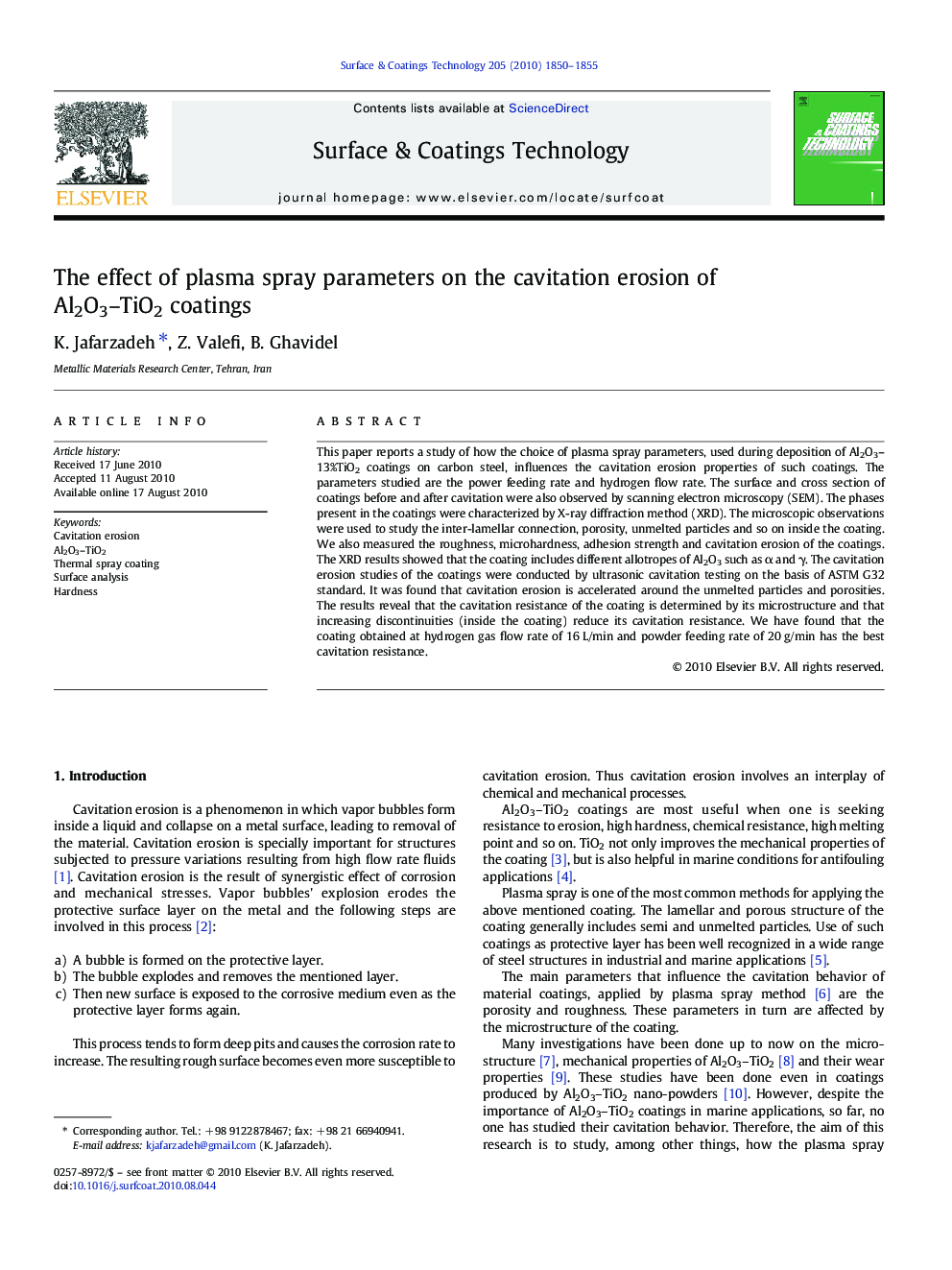| Article ID | Journal | Published Year | Pages | File Type |
|---|---|---|---|---|
| 10668591 | Surface and Coatings Technology | 2010 | 6 Pages |
Abstract
This paper reports a study of how the choice of plasma spray parameters, used during deposition of Al2O3-13%TiO2 coatings on carbon steel, influences the cavitation erosion properties of such coatings. The parameters studied are the power feeding rate and hydrogen flow rate. The surface and cross section of coatings before and after cavitation were also observed by scanning electron microscopy (SEM). The phases present in the coatings were characterized by X-ray diffraction method (XRD). The microscopic observations were used to study the inter-lamellar connection, porosity, unmelted particles and so on inside the coating. We also measured the roughness, microhardness, adhesion strength and cavitation erosion of the coatings. The XRD results showed that the coating includes different allotropes of Al2O3 such as α and γ. The cavitation erosion studies of the coatings were conducted by ultrasonic cavitation testing on the basis of ASTM G32 standard. It was found that cavitation erosion is accelerated around the unmelted particles and porosities. The results reveal that the cavitation resistance of the coating is determined by its microstructure and that increasing discontinuities (inside the coating) reduce its cavitation resistance. We have found that the coating obtained at hydrogen gas flow rate of 16 L/min and powder feeding rate of 20 g/min has the best cavitation resistance.
Related Topics
Physical Sciences and Engineering
Materials Science
Nanotechnology
Authors
K. Jafarzadeh, Z. Valefi, B. Ghavidel,
